
The 11th Armored Cavalry Regiment is a unit of the United States Army garrisoned at the Fort Irwin National Training Center in California. The regiment has served in the Philippine–American War, the Pancho Villa Expedition, World War II, the Vietnam War, Gulf War and Iraq War. The 11th ACR serves as the opposing force (OPFOR) for the Army and Marine task forces, and foreign military forces that train at Fort Irwin.

Galen Bruce Jackman is a retired United States Army Major General. His last assignment in the Army was serving in the Pentagon as the Army's Chief Legislative Liaison. Prior to that assignment, he was the first commanding general of the Joint Force Headquarters National Capital Region (JFHQ-NCR), a dual-hatted role combined with commanding the Military District of Washington (MDW).

The United States Army Military District of Washington (MDW) is one of nineteen major commands of the United States Army. Its headquarters are located at Fort Lesley J. McNair in Washington, D.C. The missions of the units in the Military District of Washington include ceremonial tasks as well as a combat role in the defense of the National Capital Region.
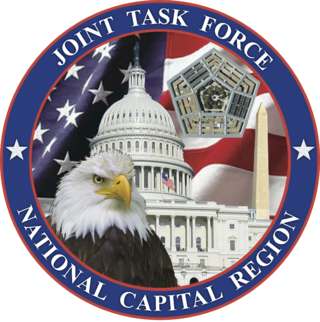
Joint Task Force-National Capital Region (JTF-NCR), formerly known as Joint Force Headquarters-National Capital Region (JFHQ-NCR), is directly responsible for ceremonial missions and the homeland security and defense of what is called the National Capital Region, which includes the Washington D.C. area as well as surrounding counties in Virginia and Maryland. Primarily made up of joint military units within the National Capital Region, the JTF-NCR assists federal and local civilian agencies and disaster response teams in the event that the capital area's security is or possibly could be breached by acts of terrorism. Officially activated on September 22, 2004, as JFHQ-NCR, the JTF-NCR is part of United States Northern Command.

Charles Christopher "Hondo" Campbell was a United States Army officer who served as the 17th Commanding General, United States Army Forces Command (FORSCOM). He previously served as FORSCOM's Deputy Commanding General and Chief of Staff from April 26, 2006, to January 8, 2007. He assumed the commanding general assignment January 9, 2007, and completed it on June 3, 2010.

General Donn Albert Starry was a United States Army four-star general who served as commanding general of United States Army Training and Doctrine Command from 1977 to 1981, and as commander in chief of United States Readiness Command from 1981 to 1983.
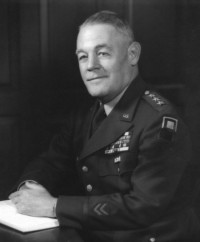
Thomas Wade Herren was a United States Army officer and combat commander whose career spanned from World War I to the post-Korean War era.

Robert William Cone was a United States Army four-star general who last served as the commanding general of United States Army Training and Doctrine Command (TRADOC). He assumed command of TRADOC on April 29, 2011. He previously served as the commander of Fort Hood and III Corps on September 22, 2009, with which he deployed to Iraq in February 2010, and served as the Deputy Commanding General for Operations, United States Forces – Iraq, until February 2011. Prior to that, he served as the Special Assistant to the Commanding General of TRADOC. He retired in 2014.

William Scott Wallace is a retired four-star general in the United States Army. He served as Commanding General, United States Army Training and Doctrine Command (TRADOC) at Fort Monroe, Virginia from October 13, 2005, to December 8, 2008. He retired from the army on December 8, 2008.
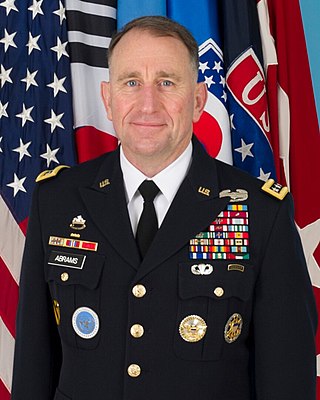
Robert Bruce Abrams is a retired four-star general in the United States Army who last served as the commander of United States Forces Korea. He concurrently served as the commander of United Nations Command and commander of R.O.K.-U.S. Combined Forces Command. He previously served as the 22nd commanding general of United States Army Forces Command from August 10, 2015 to October 17, 2018. He was a 1982 graduate of the United States Military Academy where he was commissioned as an armor officer. During his years of active service, he has held command and staff positions across the Army and joint community in Germany, the United States, Southwest Asia and South Korea. Abrams comes from a family of career military officers. His father was former Army Chief of Staff General Creighton W. Abrams Jr., and both of his elder brothers, Creighton and John, were Army general officers.

Brigadier General Terence John Hildner was a United States Army General Officer who served as commander of the 13th Sustainment Command (Expeditionary) from 2010 until his death in 2012. He is the second highest-ranking American officer to die while serving in the war in Afghanistan.
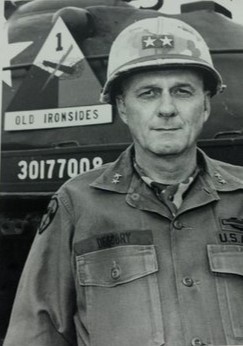
William Robertson Desobry was a senior U.S. Army field commander in Germany during the Cold War, and a Lieutenant General in the United States Army. General Desobry was a decorated hero from World War II, and played a significant role as an advisor to the Republic of Vietnam Army and on the Army Staff during the Vietnam War. In addition to commanding a division and corps, he was the Commanding General of the Armor Center and was the President of the Tank Task Force, which led to the creation of the M1 Abrams.
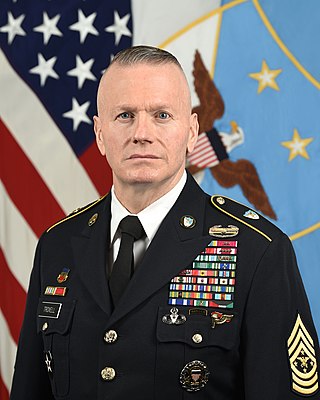
John Wayne Troxell is a retired United States Army senior non-commissioned officer who served as the third Senior Enlisted Advisor to the Chairman of the Joint Chiefs of Staff (SEAC). This position made him the most senior enlisted member of the United States Armed Forces. He enlisted in the United States Army in September 1982, as an armored reconnaissance specialist and graduated from One Station Unit Training at Fort Knox, Kentucky.

Paul Edward Funk II is a retired four-star general in the United States Army who last served as the commanding officer of the Army Training and Doctrine Command. He previously served as the 60th Commanding General of III Corps and Fort Hood, Texas, and as the Commanding General, Combined Joint Task Force – Operation Inherent Resolve. Funk was born at Fort Hood, Texas, graduated from Fort Knox High School, and was commissioned an Armor Officer through ROTC upon graduation from Montana State University in 1984. His first assignments saw him serve in a variety of Armor and Cavalry roles to include Tank Platoon Leader, Company Executive Officer, Squadron Commander of 1st Squadron, 7th Cavalry Regiment and Brigade Commander of 1st Brigade Combat Team, 1st Cavalry Division located at Fort Hood.

Joseph Matthew Martin is a retired general in the United States Army who served as the 37th Vice Chief of Staff of the Army from 2019 to 2022. He previously served as the director of the Army Staff in Washington, D.C.

Major General Albert Cowper Smith was an officer in the United States Army. He is most noted for his service as Commanding General of the 14th Armored Division during the later part of World War II. Smith and his division liberated Prisoner-of-war camps, Oflag XIII-B and Stalag VII-A in April 1945.
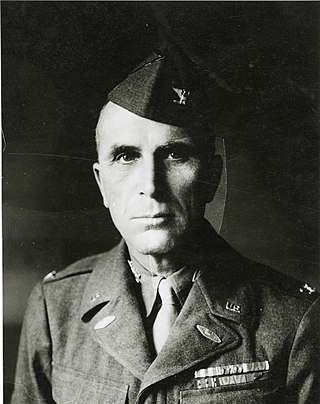
John Tupper Cole was a highly decorated officer in the United States Army with the rank of Brigadier General. A graduate of the United States Military Academy and veteran of both World Wars, he is most noted for his service as Colonel and Commanding officer, Combat Command B, 5th Armored Division during combats on the Western Front.

Antonio Alzona Aguto Jr. is a retired United States Army lieutenant general who served as the commander of Security Assistance Group–Ukraine (SAGU) from 2022 to 2024. He served as the 40th commanding general of First United States Army from 2021 to 2022. He previously served as the Commanding General of the 3rd Infantry Division and prior to that as the Deputy Chief of Staff for Operations, Plans, and Training of the United States Army Forces Command.

John Buchanan Richardson IV is a retired United States Army major general. He served as Commanding General of the 1st Cavalry Division from July 2021 to July 2023. and Deputy Commanding General of the III Corps from September 2, 2020, to July 2021. Before that, he served as the Deputy Chief of Staff for Operations, Plans, and Training of the United States Army Forces Command. Richardson is a 1991 graduate of the United States Military Academy.

Bradley A. Becker is a retired United States Army lieutenant general who last served as the 6th commanding general of the United States Army Installation Management Command from September 5, 2018, to August 15, 2019. He previously served as Chief of the Office of Security Cooperation – Iraq from January 2017 to April 2018. Previous commands he held include serving as commanding general of the United States Army Military District of Washington and commander of the Joint Force Headquarters National Capital Region from June 2015 to April 2017, and prior to that as the 46th commanding general of the National Training Center at Fort Jackson from August 2013 to May 2015.





















